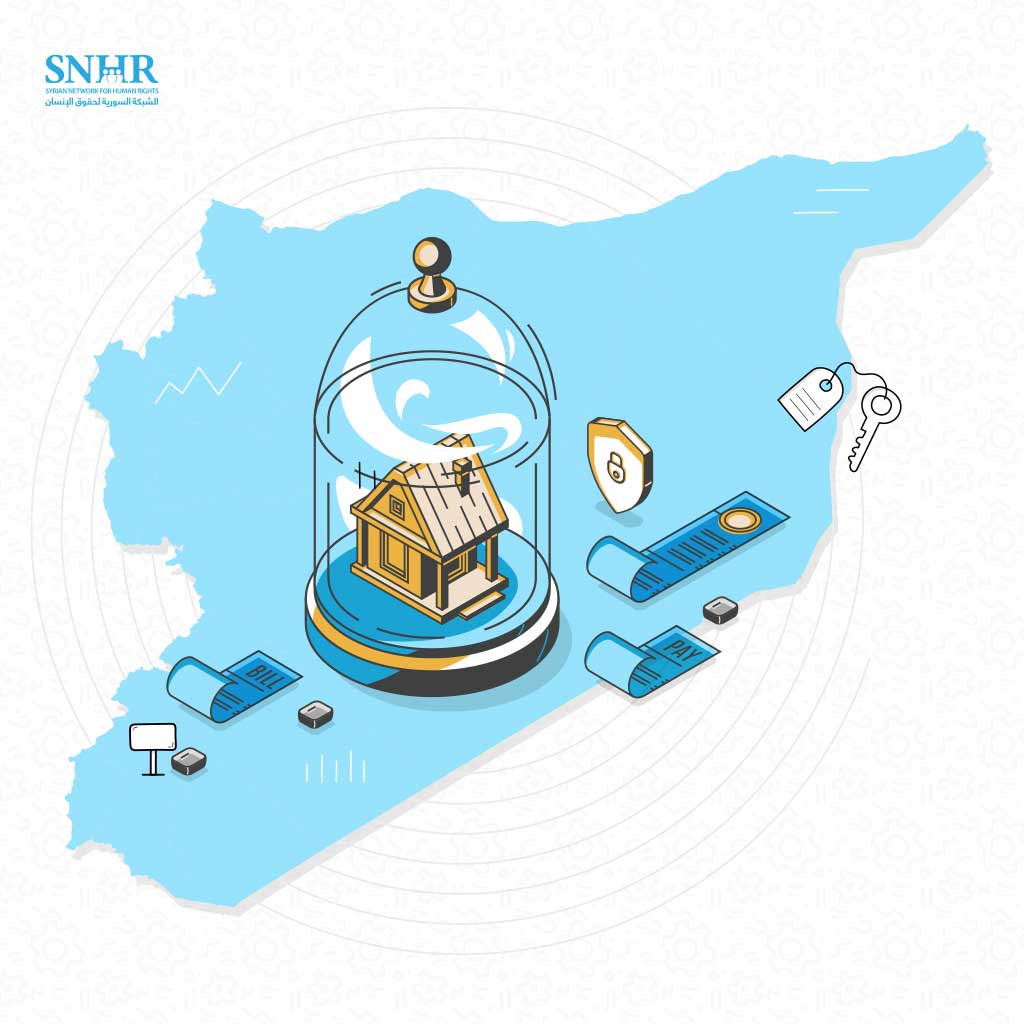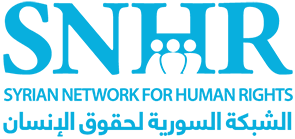The Laws Principally Target Three Groups: 12 Million Forcibly Displaced Persons, 112,000 Forcibly Displaced Persons, and Half a Million Victims Who Have Yet to be Registered as Dead in the Civil Registry

Languages
Available In
Press release: (Download the full report below)
The Hague – The Syrian Network for Human Rights (SNHR) revealed in a report released today entitled, ‘The Laws Introduced by the Syrian Regime to Control Real Estate Ownership and Lands Before and Since the Beginning of the Popular Uprising in March 2011’ that the laws in question principally target three groups: 12 million forcibly displaced persons, 115,000 forcibly displaced persons, and half a million victims who have yet to be registered as dead in the civil registry.
The laws through which the Syrian regime seized real estate properties and lands in Syria
The 61-page report provides details on the laws employed by the Syrian regime to control real estate ownership and territory in Syria before and since the start of the popular uprising in March 2011. As the report notes, the Syrian regime took full advantage of its absolute control over the legislative and judicial branches of government. Through the People’s Assembly of Syria, for instance, the regime has been able to pass whatever laws it needs, not to mention imposing control over the constitutional court. Moreover, the head of the Syrian regime has the power to issue any decree he pleases without having to go through the aforementioned People’s Assembly. The report stresses that, while many nominally legitimate ‘decrees and laws’ were introduced prior to the start of the popular uprising in March 2011, those which have the most serious and dangerous effect on the Syrian people’s ownership of real estate were all introduced since the uprising began. The report adds that, while the laws passed by the regime can theoretically affect every single Syrian citizen, these laws in particular were directly and principally aimed at three main groups, namely: first, the forcibly displaced (both internally displaced persons (IDPs) and refugees), estimated today at 12.3 million Syrian citizens according to the UN Office of the High Commissioner for Refugees (UNHCR); second: the forcibly disappeared, estimated to number at least 112,000 Syrian citizens according to SNHR’s database. It is important to note that the Syrian regime is directly responsible for the disappearance of over 85 percent of this total at least; and third: victims (civilians and fighters alike), who are estimated today to number at least half a million Syrians, the overwhelming majority of whom have not been recorded as dead in the civil registry. Needless to say, the overwhelming majority of the victims were dissidents opposed to the Syrian regime’s autocratic rule, and were killed by the regime which has been continuously committing violation since March 2011. It is clear, therefore, that these laws pose a direct threat to at least half of the Syrian population.
The report, which consists of six chapters, begins by explaining basic concepts about real estate ownership generally and real estate ownership in Syria particularly, touching upon how real estate ownership is documented and protected in the country. Next, the report presents a critical reading of the relevant laws and regulations promulgated by the Syrian regime before March 2011. The third chapter shifts to the laws on real estate development introduced since March 2011 and their implications for real estate ownership in Syria, also touching on the laws related to real estate transactions and the real estate registry. The fifth chapter tackles laws which have indirect implications for housing, land, and property (HLP) rights in Syria since the start of the popular uprising in March 2011. Finally, the sixth chapter analyzes the instruments used by the Syrian regime to control territory and real estate properties.
Introducing or amending real estate laws is an ongoing attempt to perpetuate a chaotic real estate reality in Syria
The report notes that ever since the days of Hafez Assad’s rule, the Syrian regime has attempted to enforce its own reality upon the Syrian people at every stage through continuously devising new real estate development laws and amending existing ones. In this, the Syrian regime constantly made sure to preserve the chaotic situation of real estate ownership in the country, always looking for more loopholes which the regime and its elite could exploit to seize control of public and private properties alike. This is why the Syrian regime has, since long before the start of the popular uprising in March 2011, passed various different laws ostensibly intended to regulate the field of real estate and property ownership but in reality created to take over ownership of real estate properties across Syria. In this context, the report touches upon the legal foundation created by the Syrian regime before March 2011 and how this was employed by the regime to take over whatever properties or territory it wished to, with the report outlining the most notable laws related to property ownership and real estate-related issues.
Most notable real estate laws promulgated by the Syrian regime after March 2011
As the report further reveals, the Syrian regime has taken advantage of the consequences of the popular uprising, which eventually devolved into an internal armed conflict that displaced millions of Syrians due to the violations committed first and foremost by the Syrian regime itself, and secondly by the other parties to the conflict, to exploit the situation in its own favor in regard to the real estate ownership issue. To that end, the regime used the reality and aftermath of the armed conflict to attain as many long-term gains as possible, which explains the regime’s passing a slew of new real estate ownership laws. In this context, the report outlines the most notable real estate development laws passed by the Syrian regime since 2011 and the purpose of each of these. The report notes, for instance, that the ‘Law on Real Estate Development and Investment’ promulgated in 2008 and the subsequent related legal texts: Law No. 25 of 2011, the ‘Law on Planning’ (Law No. 23 of 2015), and Law No. 10 of 2018, all formulate an integrated framework that creates a favorable legal environment for the regime and its allies, as they continue to seize the properties of their opponents. In fact, the report stresses, the issuing of many real estate laws was closely connected to the developments in the armed conflict on the ground in Syria, wherein the Syrian regime would regularly issue legislative decrees related to real estate regulation after taking control of a certain area for the purpose of seizing the vacant properties in that area to the benefit of its allies and supporters.
The report tracks the steps taken by the Syrian regime to take over real estate properties through the legislative decrees it’s issued, whether these are related to the structure of real estate registries or to real estate transactions as a whole. To this end, the report outlines the most notable related decrees and laws introduced during this period, noting that through building this cod-legal arsenal, the Syrian regime seeks to deny the fundamental rights that returnees, both IDPs and refugees alike, may demand at a certain point in time. Through these actions, the regime is creating a new reality in which most areas are under its direct authority through administrative units, and indirectly through real estate developers who win patronage through their blind, unquestioning loyalty to the regime.
Furthermore, the report notes that many laws promulgated by the Syrian regime since March 2011 have had major implications for the real estate sphere in Syria. In this, the regime has indirectly linked real estate records and documents with those laws in order to deter any political dissident from attempting to seek their HLP rights afforded by the constitution for fear of risking arrest in light of these laws, which the report outlines.
The Syrian regime used multiple instruments besides the laws and legislations promulgated in order to take control of lands and real estate properties
As the report reveals, the Syrian regime has used several instruments, aside from the laws and legislative articles it passed, in order to take over lands and real estate properties. Some of the most notable instruments are based on taking advantage of the widespread destruction. To that end, the report notes, it was discovered in dozens of areas attacked by the Syrian regime that the destruction inflicted was not incidental but was a goal in and of itself, to drive people out of those areas and inflict as much destruction as possible so as to enable the regime to easily pillage and loot the destroyed areas and steal the properties of the displaced residents, relying on the laws it had passed to confer a spurious legitimacy on these activities. The report also touches upon the impact of the incomplete civilian documents on the real estate ownership issue, noting that the Syrian regime has denied hundreds of thousands of dissidents their most basic rights afforded by domestic and international laws, including acquiring identification documents. One demonstration of this criminality is the regime’s demand that individuals who have been internally displaced or sought refuge abroad, who justifiably fear that they may be arrested and tortured if they return to their home country, should be physically present before being able to claim ownership. This effectively creates two major problems: firstly, denying the fundamental rights of a whole generation of dissidents displaced, killed, or forcibly disappeared by the regime, and secondly denying the rights of a second generation born during the period of the armed conflict in areas under the control of the opposition, with the overwhelming majority of these children’s births not registered, depriving them of official identification documents.
Kurds denied a Syrian citizenship is one of the instruments used by the Syrian regime to establish control over lands and real estate properties
Another instrument used by the regime to justify seizure of lands and other properties, according to the report, is the regime’s denial of Syrian citizenship and nationality to Syria’s Kurdish population, which directly affects their right to real estate ownership. The report also sheds light on the regime’s cynical exploitation of the particular difficulties faced by Syrian women. Lastly, the report touches upon the manufactured security clearance issue that the Syrian regime’s government introduced through a circular issued in 2015, which states that all real estate transactions require that those involved receive clearance from regime security authorities beforehand. Effectively, the report stresses, the regime used this security clearance requirement as a weapon of warfare against political dissidents.
All the laws and legislations promogulated by the Syrian regime since March 2011 serve one goal, that is to take advantage of the climate of an internal armed conflict to accelerate the process of seizing the properties of Syrian dissidents
The report concludes that the Syrian regime’s hegemony over the legislative process through controlling the three branches of power (legislative, judicial, and executive) has created a reality in which the laws issued in relation to real estate properties, both before and since March 2011, have been created simply and completely to serve the regime’s vision and enable it to take over Syrian citizens’ real estate properties, particularly those of the three aforementioned groups, i.e. forcibly displaced persons, forcibly disappeared persons, and the families of those victims whose deaths have not been registered in the civil registry.
The report adds that most of the laws and legislative articles promulgated by the Syrian regime since March 2011 all originated from the same malign motivation, namely of taking advantage of the chaos caused by the internal armed conflict to accelerate the process of seizing and stealing the properties of Syrian dissidents, especially those from the three groups identified above. Moreover, not only did the regime construct a legal arsenal to justify the theft of dissidents’ properties, but it also took advantage through the creation of indirectly related legislation such as the ‘Counterterrorism Law’, in order to prevent dissidents and the three aforementioned groups from exercising their rights over their properties in Syria, through the creation of an endless bureaucratic maze that effectively renders exercising those rights impossible.
The report also concludes that most of the real estate laws regarding property ownership are interconnected and deliberately vague and confused due to the duality found in them, the conflicting authorities involved in administering them, and the lack of any clear hierarchy of authority among the executive apparatuses responsible for implementing said laws, which include: the Ministry of Housing, the Ministry of Local Administration and its affiliated municipal and governorate councils, the Real Estate Administration, the Ministry of Defense, and the committees formed in accordance with the various real estate laws. The report adds that most of the laws passed by the regime on real estate regulation and redevelopment areas, especially Law No. 66 of 2012 and Law No. 10 of 2018, were passed for one purpose only, namely to accelerate the process of the transfer of real estate ownership from dissidents to pro-regime entities, which of course ensures the latter’s economic and political interests in the current situation.
The report stresses that in order to ensure its future control over the properties and land belonging to members of the three aforementioned groups, the regime has placed many administrative obstacles in the way of the representatives and relatives of those three groups, including unnecessarily complicating the administrative procedures, such as acquiring death certificates for the dead and making it impossible for family members to prove the legal status of those who have been killed, who are not registered in the civil registry, in addition to introducing security clearance requirements for the refugees and IDPs.
Furthermore, the report concludes that most of the real estate laws adopted by the Styrian regime violate many fundamental human rights, through confiscating properties, raising taxes and fees, and requiring security clearance for many real estate transactions.
The report calls on the international community and the UN to condemn the Syrian regime’s hegemony over the three branches of government, to expose its practices in passing laws which are simply quasi-legal tools used to pillage the properties of IDPs, refugees, forcibly disappeared persons, and unregistered victims. The report also calls on the international community and the UN to coordinate with human rights group to support the process of documenting the legislations and laws promulgated by the Syrian regime and expose the extent to which these blatantly violate international human rights laws, as well as to condemn these unjust laws’ terrible consequences. The report stresses that it is impossible to address the roots of the real estate issue in Syria so long as the Syrian regime remains in power since it is the main reason behind those complications. Indeed, a political transition will be the first step towards resolving the real estate issue in Syria.
Additionally, the report calls on the donor states, investors, and humanitarian agencies operating in Syria to cease their direction of funds to the Syrian regime through reconstruction programs, and to introduce new mechanisms, so as to avoid those funds potentially being misused to violate HLP rights of residents or the displaced, or so that these funds do not go to bodies that violate human rights and international humanitarian law.
The report also makes a number of other recommendations.


